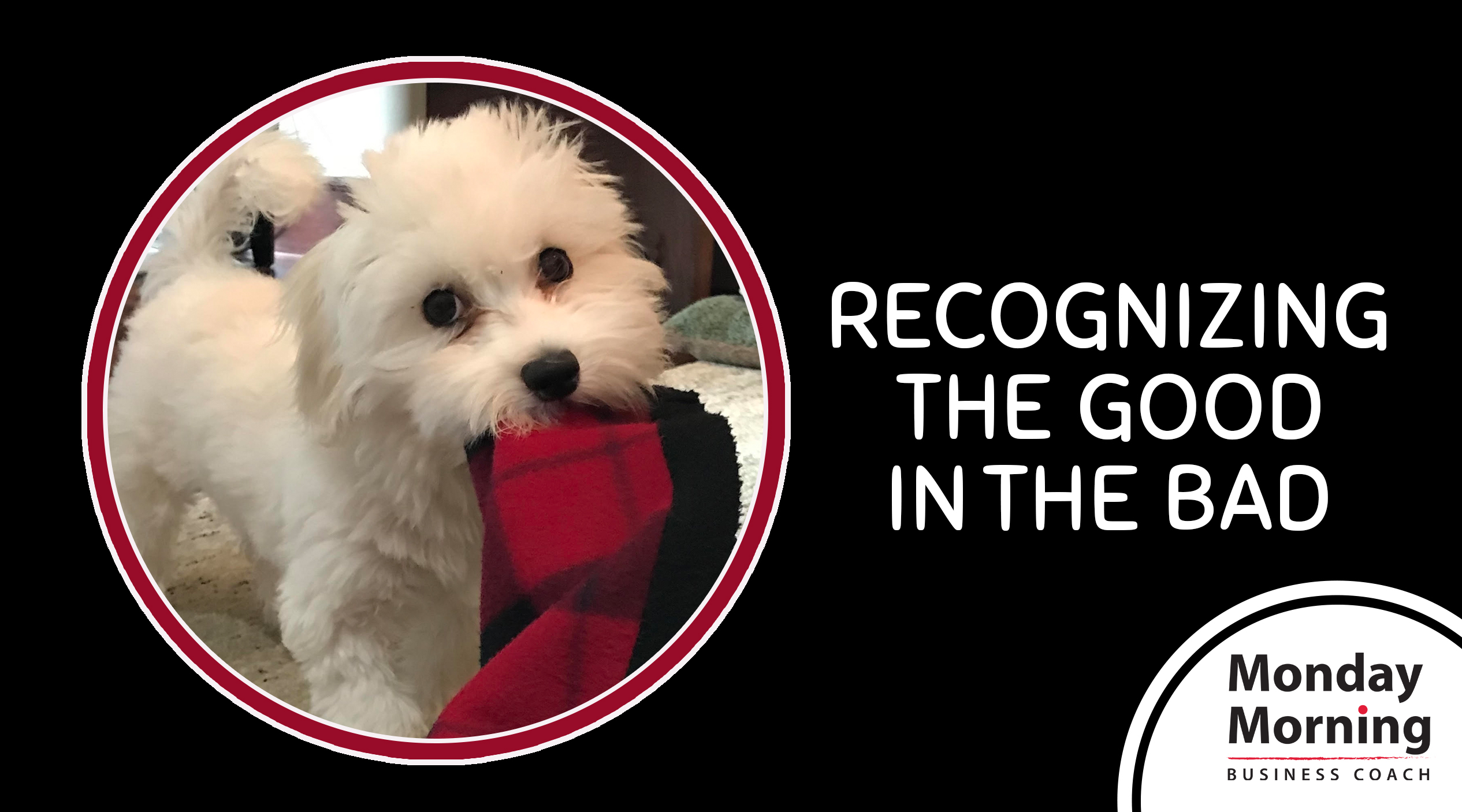Over the past few weeks, we’ve been talking about the similarities between puppy training and leading a team. If you haven’t had a chance to read those previous posts, you can access them here:
- Introduction: What Puppy Training Can Teach You About Leading and Managing
- Rewarding the Right Behaviors
- Ignoring the Problem Behaviors
- Keep Noticing Good Behaviors
There are many levels and nuances to good behaviors and problem behaviors, so we’re going to take a look at these a little closer today.
When a puppy is doing something bad, it usually results in a negative outcome. For example: when a puppy chews on a blanket, the blanket will wind up with a hole and the puppy will wind up with a tummy ache. Most people would agree this is a bad result.
As we’ve mentioned, good and problem behaviors are a little more nuanced with humans.
It’s challenging and messy (and possible!),
to get positive results even when the behavior is “bad”.
Let us explain. We worked with a client who had a high-performing staff member named Julie. Julie’s behavior was often easygoing and collaborative, but when met with a deadline she kicked into high stress, anxiety, and was resistant to input.
Julie’s boss came to us and said that despite offering her guidance to “not take it so seriously,” she seemed to get more anxious and impatient.
We all have different ways of working, and this woman’s method was to put all of the pressure on herself to accomplish tasks perfectly. When approached by her boss with suggestions and solutions, the situation escalated instead of becoming less stressful.
In this scenario, the output of the work isn’t being called into question—no chewed-up blanket. In fact, the finished work is quite good. What we’re looking at is the negative behaviors that kick in while she’s doing good work.
One option is to ignore bad behaviors when she’s on a deadline trusting that she’ll sort out her level of anxiety on her own—she gets to be anxious and stressed as long she’s getting the job done well and she isn’t sucking others into her stress.
If the quality of her work declines or if she’s keeping others from being successful because she’s imposing her stress onto them, you’ll need to intervene.
Another option is to praise her during those moments of relative minimum stress so that she starts to notice when she’s less stressed. Saying something like, “I admire your devotion to the project. You seem to have a little headspace at the moment, so let’s connect and see how I can support you.”
She may not recognize when her stress levels are on the rise. People can often disconnect themselves from intense feelings and, as a result, they may not be fully aware of their impact on others.
One of the hardest parts of managing others is to know when to intervene and when to let people work things out on their own.
Humans tend to provide feedback around negative behaviors when, in fact, providing feedback around positive behaviors is far more productive in the long run.
We humans are complex and messy! And there are, of course, many more nuances. If you’re finding that you’d like some support in developing your team, let us know.


